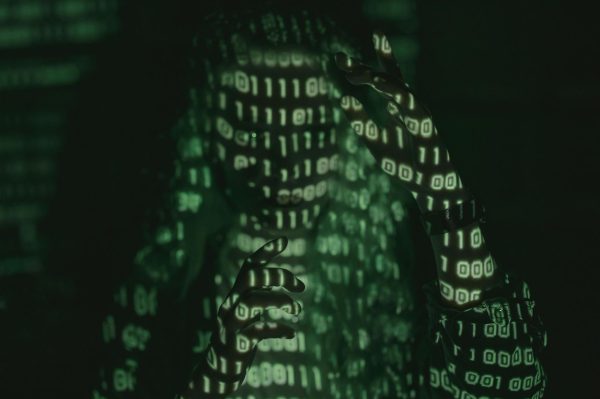NIST CSF 2.0 Updates: Essential Mapping to ISO 27001 Controls
NIST CSF 2.0 represents a significant evolution in the cybersecurity framework landscape, offering organizations a more robust and adaptable approach to managing cyber risks. With the increasing complexity of digital threats, aligning cybersecurity practices with globally recognized standards like ISO 27001 has never been more critical. This article explores the updates introduced in NIST CSF 2.0, provides a detailed mapping of its controls to ISO 27001, and offers actionable insights for compliance officers, cybersecurity managers, and SaaS founders to strengthen their cybersecurity posture.
Understanding the Evolution: What’s New in NIST CSF 2.0?

The National Institute of Standards and Technology (NIST) released the Cybersecurity Framework (CSF) in 2014 as a voluntary guideline to help organizations manage and reduce cybersecurity risks. The latest version, NIST CSF 2.0, builds on its predecessor by introducing several enhancements:
1. Expanded Scope: NIST CSF 2.0 broadens its applicability beyond critical infrastructure to include organizations of all sizes and sectors.
2. Governance Focus: A new “Govern” function emphasizes the importance of cybersecurity governance, ensuring alignment with organizational objectives and risk management strategies.
3. Enhanced Flexibility: The framework offers more tailored guidance, allowing organizations to adapt it to their specific needs and risk profiles.
4. Improved Clarity: Simplification of language and structure makes it easier for stakeholders to understand and implement the framework.
5. Integration with Other Standards: NIST CSF 2.0 facilitates better alignment with other cybersecurity standards, such as ISO 27001, streamlining compliance efforts.
These updates make NIST CSF 2.0 a more comprehensive and practical tool for managing cybersecurity risks in today’s dynamic threat landscape.
The Importance of Mapping NIST CSF 2.0 to ISO 27001
ISO 27001 is a globally recognized standard for information security management systems (ISMS). It provides a systematic approach to managing sensitive information, ensuring its confidentiality, integrity, and availability. Mapping NIST CSF 2.0 to ISO 27001 offers several benefits:
– Streamlined Compliance: Organizations can avoid duplicating efforts by aligning the two frameworks, ensuring consistent implementation of controls.
– Comprehensive Risk Management: Combining the strengths of NIST CSF 2.0’s risk-based approach and ISO 27001’s structured management system results in a holistic cybersecurity strategy.
– Improved Communication: Mapping helps bridge the gap between technical teams and executive leadership by demonstrating compliance with multiple standards.
– Enhanced Credibility: Adopting both frameworks demonstrates a commitment to cybersecurity best practices, boosting stakeholder trust.
Mapping NIST CSF 2.0 Controls to ISO 27001
Below is a detailed mapping of NIST CSF 2.0’s core functions and categories to ISO 27001 controls. This comparison helps organizations identify overlapping requirements and gaps in their cybersecurity programs.
1. Govern (New in NIST CSF 2.0)
The “Govern” function focuses on establishing and overseeing cybersecurity strategy, policies, and processes. It aligns with ISO 27001’s governance and management requirements.
| NIST CSF 2.0 Category | ISO 27001 Control | Description |
|———————————-|————————————-|—————————————————————————–|
| Organizational Context | A.5.1 Policies for Information Security | Defines the organizational context for cybersecurity |
| Risk Management Strategy | A.6.1.3 Information Security Risk Treatment | Establishes a risk management strategy aligned with business objectives |
| Cybersecurity Supply Chain Risk | A.15.1 Information Security in Supplier Relationships | Addresses risks associated with third-party suppliers |
2. Identify
The “Identify” function involves understanding and managing cybersecurity risks to systems, assets, data, and capabilities.
| NIST CSF 2.0 Category | ISO 27001 Control | Description |
|———————————-|————————————-|—————————————————————————–|
| Asset Management | A.8.1 Responsibility for Assets | Identifies and manages assets critical to information security |
| Business Environment | A.5.2 Information Security Roles and Responsibilities | Understands the business context and aligns cybersecurity efforts |
| Risk Assessment | A.6.1.2 Information Security Risk Assessment | Conducts risk assessments to identify vulnerabilities and threats |
3. Protect
The “Protect” function focuses on implementing safeguards to ensure the delivery of critical services.
| NIST CSF 2.0 Category | ISO 27001 Control | Description |
|———————————-|————————————-|—————————————————————————–|
| Identity Management | A.9.4 Access Control | Manages user identities and access rights |
| Data Security | A.8.2 Information Classification | Protects data through classification and handling procedures |
| Information Protection Processes | A.12.1 Operational Procedures | Establishes procedures to protect information systems |
4. Detect
The “Detect” function emphasizes timely identification of cybersecurity events.
| NIST CSF 2.0 Category | ISO 27001 Control | Description |
|———————————-|————————————-|—————————————————————————–|
| Anomalies and Events | A.12.4 Logging and Monitoring | Detects unusual activities through monitoring and logging |
| Security Continuous Monitoring | A.12.4.1 Event Logging | Implements continuous monitoring to detect potential incidents |
5. Respond
The “Respond” function involves taking action to mitigate detected cybersecurity incidents.
| NIST CSF 2.0 Category | ISO 27001 Control | Description |
|———————————-|————————————-|—————————————————————————–|
| Response Planning | A.16.1 Management of Information Security Incidents | Develops and implements incident response plans |
| Communications | A.16.1.3 Reporting Information Security Events | Establishes communication protocols during incidents |
6. Recover
The “Recover” function focuses on restoring capabilities and services after a cybersecurity incident.
| NIST CSF 2.0 Category | ISO 27001 Control | Description |
|———————————-|————————————-|—————————————————————————–|
| Recovery Planning | A.17.1 Information Security Continuity | Develops plans to restore systems and services |
| Improvements | A.18.1 Information Security Reviews | Implements improvements based on lessons learned from incidents |
Steps to Implement NIST CSF 2.0 and ISO 27001 Together
1. Conduct a Gap Analysis: Compare your current cybersecurity practices with NIST CSF 2.0 and ISO 27001 requirements to identify gaps.
2. Develop a Governance Structure: Establish a governance framework to oversee cybersecurity strategy and implementation.
3. Integrate Risk Management: Align risk management processes across both frameworks to ensure consistency.
4. Train and Educate Staff: Provide training to employees on the updated frameworks and their roles in implementing controls.
5. Monitor and Improve: Continuously monitor your cybersecurity posture and make improvements based on feedback and incident analysis.
Key Takeaways
The updates in NIST CSF 2.0 make it a more versatile and comprehensive framework for managing cybersecurity risks. By mapping its controls to ISO 27001, organizations can streamline compliance efforts, strengthen their cybersecurity posture, and demonstrate a commitment to best practices. Whether you’re a compliance officer, cybersecurity manager, or SaaS founder, integrating these frameworks will help you navigate the evolving threat landscape with confidence.
By aligning NIST CSF 2.0 and ISO 27001, you not only enhance your cybersecurity resilience but also build trust with stakeholders, ensuring long-term success in an increasingly digital world.



